3 Diversification of the Groundplan
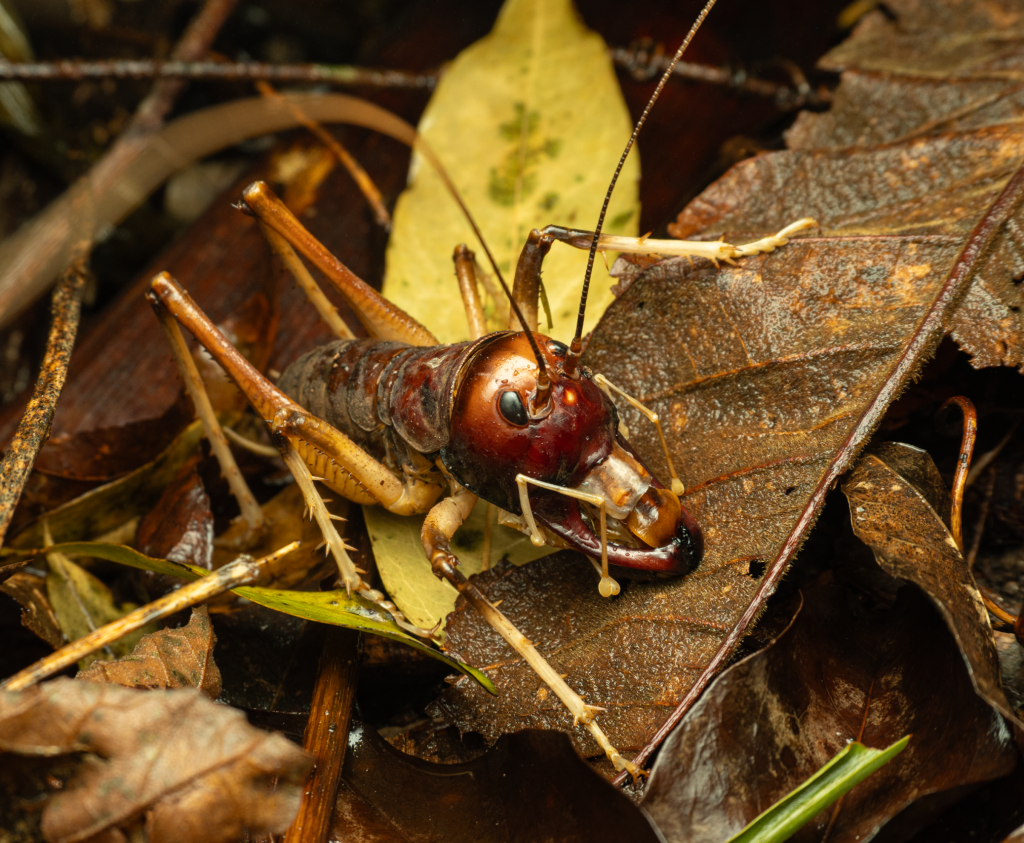
We identify the basic arrangement, or groundplan, of the insect body and use a few examples to explore how evolution has modified the structures of the body. One of the elements of insect biology where they show high diversity is in the feeding structures, or mouthparts. They have become adapted to take advantage of many different types of food, from sucking or lapping liquids to chewing on hard foods.
Remember, the success of insects can be attributed to the factors listed here.
- their small size
- a simple, efficient and evolutionarily flexible body plan
- a sophisticated sensory-motor system
- the ability of adults to fly
We would expect the basic body plan to show adaptations that reflect these attributes.
Learning Objectives
- Be familiar with the structure of the insect body groundplan
- Know the names of the insect body parts and their components
- Appreciate how evolution has changed the groundplan
- Realise that each order has a variation of the groundplan
The Body Plan
In biology a generalised body plan is called a groundplan. Insects have a basic body plan made up of three tagmata; a head which actually comprises 6 segments, three segments forming a thorax, and 11 segments that make up the abdomen.
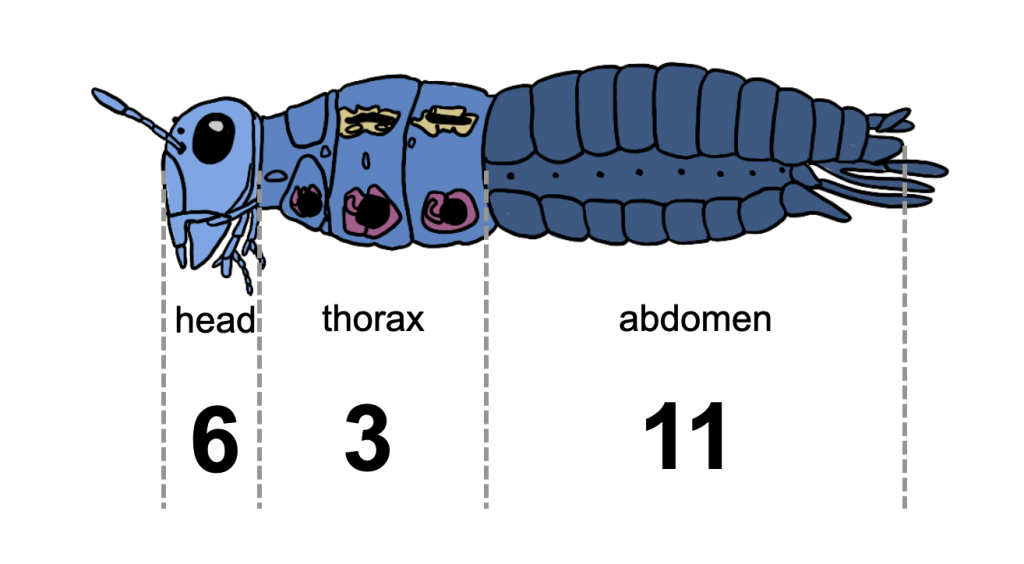
The segments that comprise the tagmata can resemble each other, e.g. the middle abdominal segments are similar in morphology. The head segments, though, are hard to recognise as individual segments. Developmental and genetic studies have contributed to understanding the segmental origins of the tagmata.
THRD0023 007 (YouTube, 3m 41s):
| Tagmata | Component parts | Some functions |
|---|---|---|
| Head | mouthparts, pair of antennae, eyes and/or ocelli, brain | feeding, seeing, detecting chemicals and odours |
| Thorax | 3 pairs of segmented legs, 1 or 2 pairs of wings (adults) | walking, flying, jumping, sound production |
| Abdomen | reproductive components and genitalia (adults), prolegs (larvae) | reproduction, digestion |
Often the juvenile insect looks very different from the adult but the basic components (tagmata) of head, thorax and abdomen are present.
The body plates of insects are described according to their position around the body. Each segment consists of three basic body plates:
- dorsal plates are called tergites
- ventral plates are called sternites
- side plates are called the pleurites
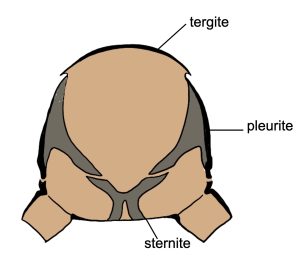
Head
Mouthparts
Insect mouthparts are a series of cuticular appendages that have been modified to become involved in feeding. The design of the mouthparts depend primarily on two factors, (1) the taxonomic group, and (2) the type of feeding habit. Each Order of insects has a basic plan of the mouthparts, but if there is a variety of feeding habits within the order then frequently the mouthparts become modified to suit the food type.
The major types of mouthparts found in insects are:
- chewing mouthparts, e.g. grasshopper (Orthoptera) or beetles (Coleoptera)
- piercing and sucking mouthparts, e.g. mosquitoes (Diptera), bugs (Hemiptera), fleas (Siphonaptera)
- non-piercing, sucking mouthparts, e.g. butterflies (Lepidoptera)
- chewing-sucking or chewing-lapping mouthparts, e.g. honeybee (Hymenoptera)
THRD0023 008 (YouTube, 6m 24s):
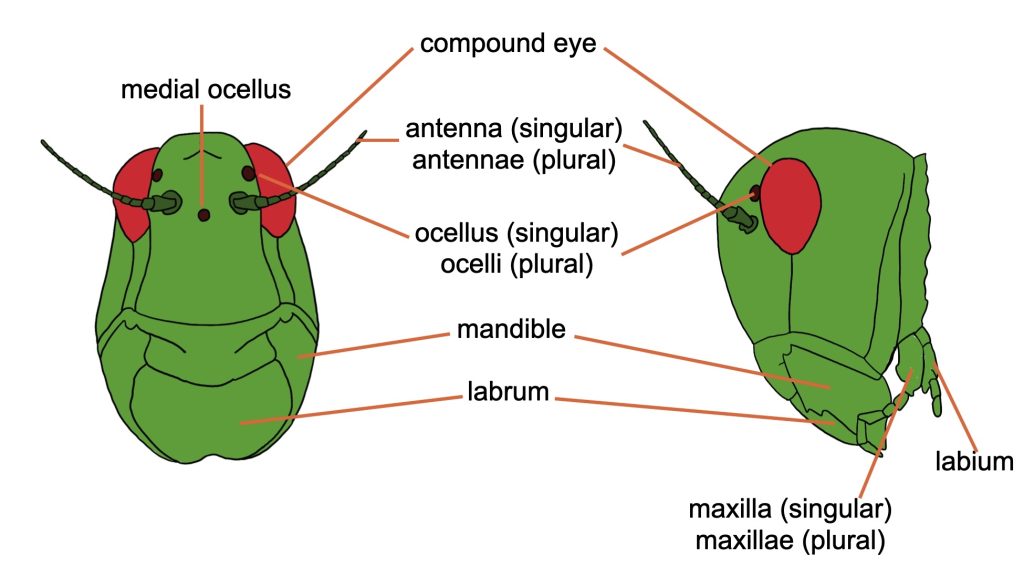
The chewing mouthparts found in the Orthoptera and Blattodea could be considered as close to the groundplan of pterygote insect mouthparts as they are plant-feeding or omnivorous.
The main components of insect mouthparts are:
- labrum, or ‘upper lip’ (inner surface is called epipharynx)
- mandibles, or jaws
- maxillae, paired, singular ‘maxilla’
- labium, or ‘lower lip’
In the evolutionary transitions, some components are lost and others are extensively modified. Once an evolutionary step has taken place, it is difficult to go back to the groundplan. Rather, evolution modifies what is already present. For example, some moths and butterflies have become fruit-piercers or blood-feeders. They modified the sucking proboscis to enable it to become a piercing tool.

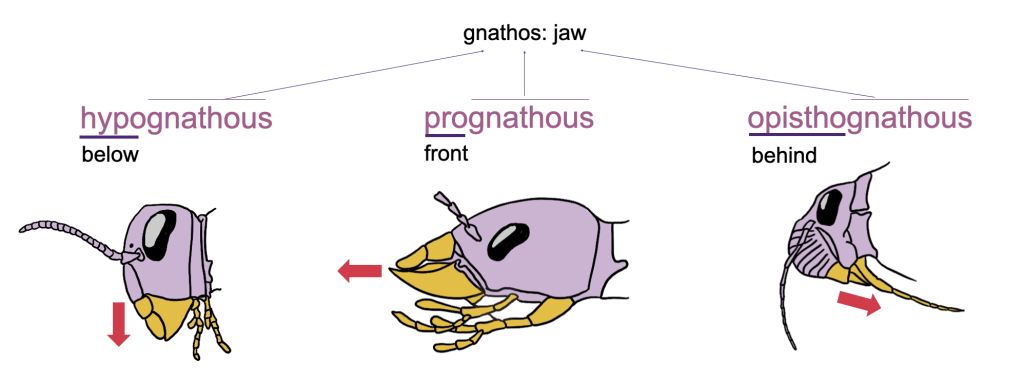
Antennae
THRD0023 009 (YouTube, 2m 25s):
The groundplan insect antenna has three regions:
- scape
- pedicel
- flagellum, consisting of flagellomeres
Insect antennae serve two main functions:
- they are the site of a concentration of olfactory sensilla
- they are the site of auditory perception in many insects.
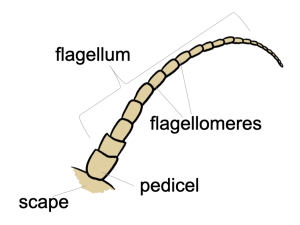
In a similar way to the mouthparts, the design of the antennae depends primarily on the taxonomic group.
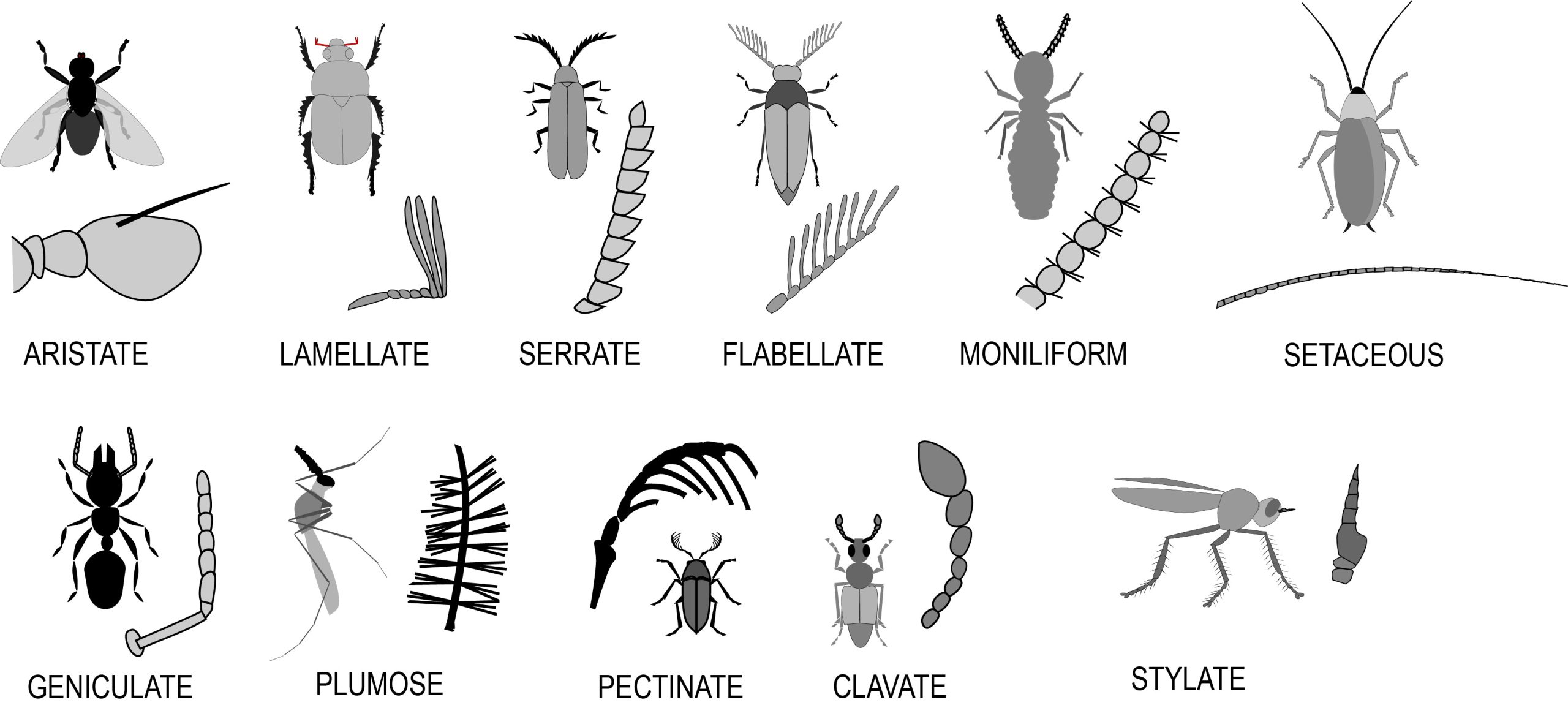
| Antennal shape | Description |
|---|---|
| Moniliform | like a string of beads |
| Filiform | thread-like |
| Aristate or stylate | first flagellomere is large; the remaining flagellomeres are modified to form an arista or a stylus; the arista is long, flexible and usually arises from the dorsal surface of the 1st flagellomere. The stylus is of variable length, inflexible and apical. |
| Geniculate | elbowed |
| Clavate or capitate | clubbed |
| Plumose | bearing whorls of long setae; feathery |
| Serrate | saw-like |
| Setaceous | bristle-like |
| Pectinate | comb-like |
| Flabellate | fan-shaped |
| Lamellate | arranged like plate stacked on top of each other |
There can be major differences in antennal morphology between males and females, especially in Lepidoptera where some male moths have much larger antennae than females, due to a concentration of pheromone-detecting sense organs.
Like the mouthparts, antennae are evolutionarily derived from appendages. This is dramatically shown in someDrosophila mutants, in which changes in the regulatory region of a gene calledantennapedia cause the antennae to become transformed into recognisable, but distorted, legs. This is evidence for homology between legs and antennae.
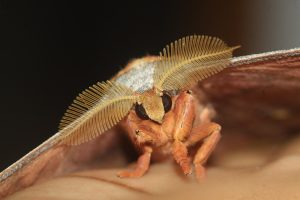
Thorax
The groundplan insect has three thoracic segments (pro-, meso- and metathorax) with two pairs of wings: a pair on the mesothorax and a pair on the metathorax, plus three pairs of legs located on the prothorax, mesothorax and metathorax.
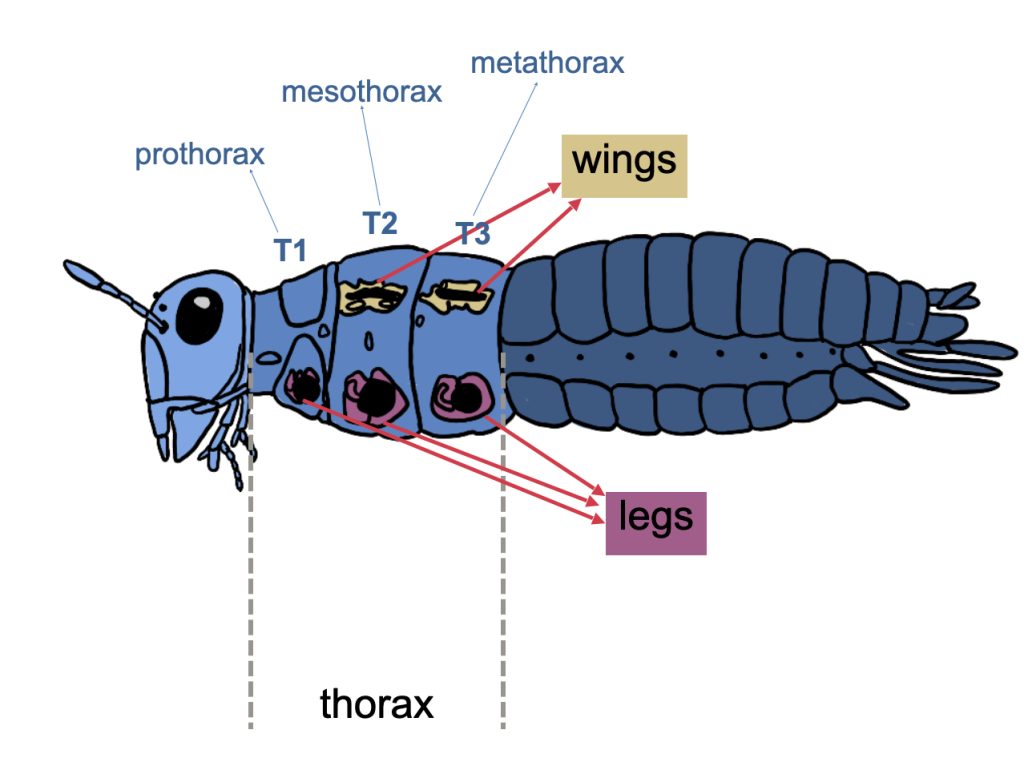
The wings are flattened cuticular sheets with very flattened epidermal cells between the upper and lower layers. Wings are living tissue, hence the wing veins provide haemolymph circulation (haemolymph is the insect equivalent of blood). Surprisingly, the wings are often covered with sense organs. The sensory axons run from the sense organ along the wing veins into the CNS.
THRD0023 010 (YouTube, 4m 45s):
Modifications of Wings
The wings can be highly modified. Once again, the modifications may be fundamental features of an order such as the elytra of beetles (Coleoptera) or the halteres of flies (Diptera). Or single species or species groups can modify the basic wing structure. For example some Diptera have evolved the loss of wings altogether in response to particular environmental features. The forewings have become modified in a number of taxa to lose their role in flight and become covers for the hindwings that take on the flight function.
Some modifications of the forewings are:
- forewings as protection for hindwings
- tegmina, e.g. grasshoppers (Orthoptera), cockroaches (Blattodea)
- hemelytra, e.g. bugs (Hemiptera)
- elytra, e.g. beetles (Coleoptera)
- forewings as organs of equilibrium
- halteres, e.g. Strepsiptera
Modifications of the hindwings are:
- hindwings as organs of equilibrium
- halteres, e.g. flies (Diptera)
- some insects have lost the hind wings, e.g. female mountain cricket (Orthoptera)
Wings can be positioned in different ways in relation to the body axis: flat over the body (e.g. Cockroach), tent-like over the abdomen (e.g. Pscoptera) or at a right angle to the body (e.g. Odonata).
Some groups have become completely wingless. The fleas (Siphonaptera) dispensed with wings as they took on the parasitic lifestyle. In fact, a number of parasites have become flightless because they can transfer from host to host during host roosting, host reproductive activity and the bearing of young. The most likely reason is that the wings can get in the way when moving among fur and feathers and the dispersal ability afforded by flight became unnecessary when they could move from host to host during contact between hosts.
Legs
The groundplan insect has 3 pairs of legs. The segments of the leg are:
- coxa
- trochanter
- femur
- tibia
- tarsus
- pretarsus
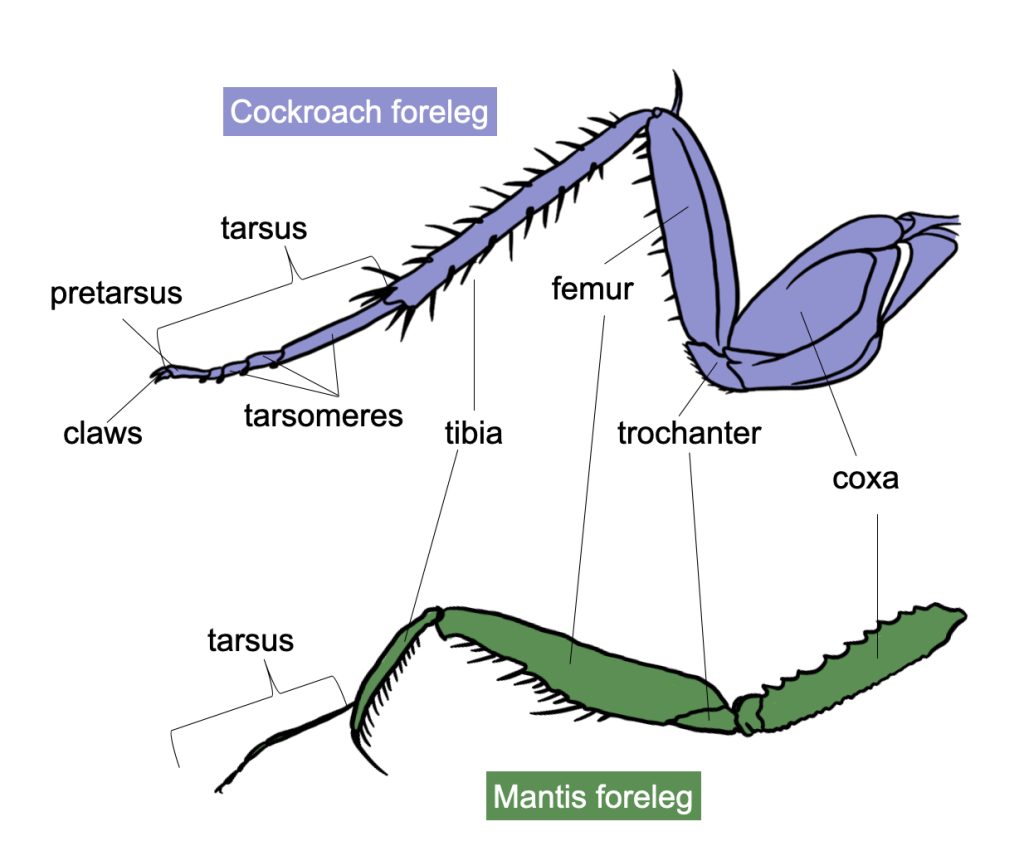
The leg segments are tubular structures with articulation points between segments. Internally, muscles and apodemes are present.
The legs are covered with sensilla, including
- proprioceptors
- touch receptors
- taste receptors
| Leg type | Examples |
|---|---|
| Jumping (Saltatorial) | Grasshopper hind legs |
| Grasping (Raptorial) | praying mantis forelegs |
| Digging (Fossorial) | mole cricket forelegs |
| Swimming (Natatorial) | water beetles |
| Walking (Gressorial) | ants, terrestrial bugs |
| Running (Cursorial) | cockroach, tiger beetle |
| Climbing or clinging (Scansorial) | parasitic lice |
Abdomen
The groundplan abdomen has 11-segments. Abdominal segments are usually more alike than, say, the thoracic segments. However, the terminal segments are usually modified for reproduction and sensing.
THRD0023 011 (YouTube, 1m 58s):
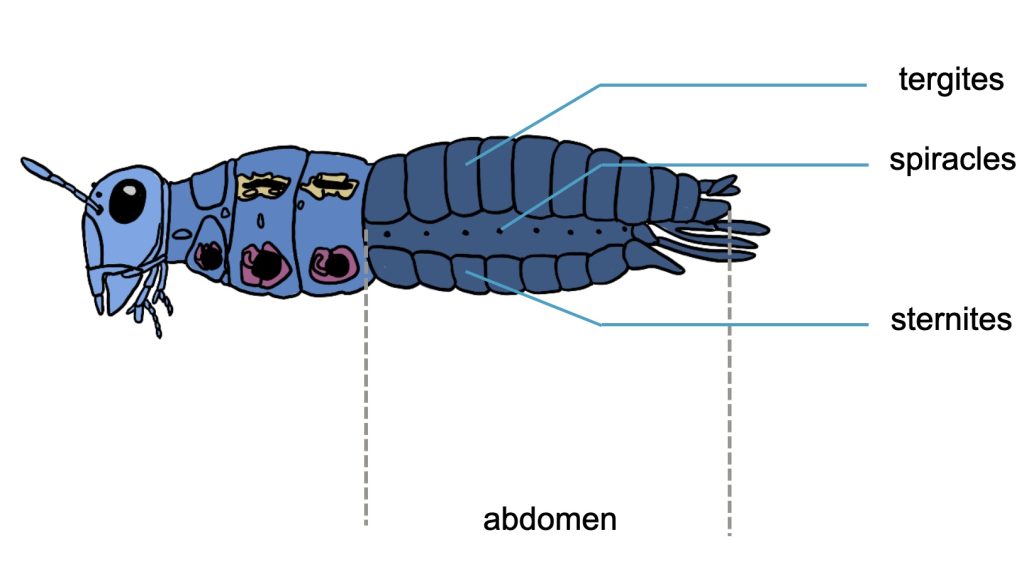
Abdominal appendages
Appendages (=terminalia) are located on the posterior segments. The genital appendages are on segments 8 and 9. A pair of appendages called cerci are often present on segment 11. Segment 11 bears a median appendage (appendix dorsalis) in some insects.
The external genitalia comprises the organs and appendages concerned with mating and egg laying that are located on the terminal abdominal segments. In females, the egg-laying tube is called the called the ovipositor. In males, the intromittent organ (penis) is frequently called the aedeagus. The word, terminalia, is often used for the sensory and mating related terminal abdominal structures.
Activities
Activity 3.1: Determine some other sensory functions of insect antennae other than smell and sound mentioned here.
Activity 3.2: Describe how the wings of beetles and flies are modified from the insect ground plan and name the modified structures.
Topic Review
Do you know…?
- the make-up of the insect groundplan
- the names of the groundplan tagmata
- the names of the leg segments
- The names in anterior to posterior order of the thoracic segments?
- the names of the different types of antenna and legs?
Can you…?
- match the different types of antennae and legs to diagrams of the structures?
- List reasons why some mammalian parasites have lost the ability to fly?

